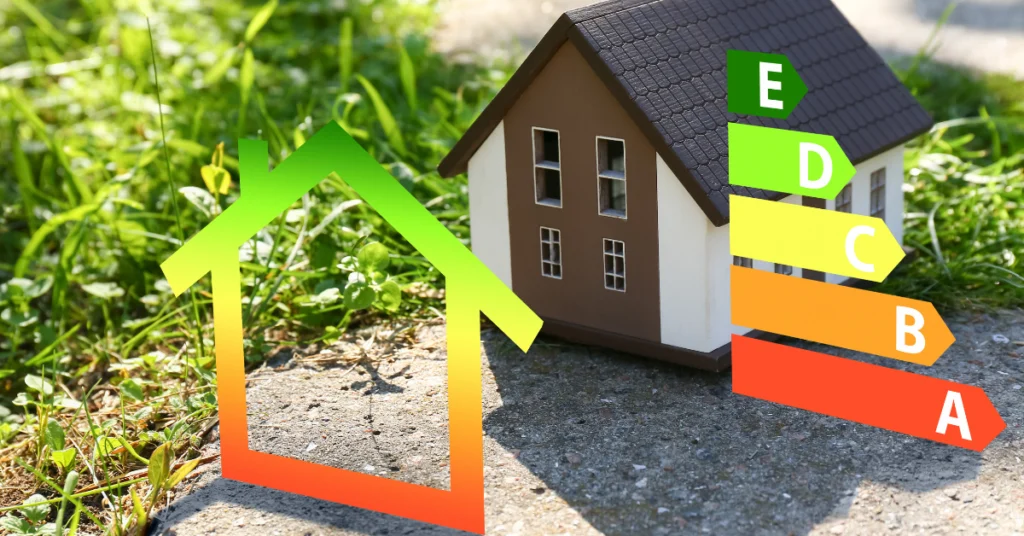Smart thermostats have revolutionized home climate control, offering both convenience and cost savings. Powered by artificial intelligence (AI), these devices learn your habits, preferences, and routines, optimizing energy usage while maintaining a comfortable environment. With the ability to adapt to changing conditions and user behavior, smart thermostats help homeowners reduce their energy bills and minimize their carbon footprint.
This article explores how smart thermostats work, the benefits they offer, and tips for choosing the right one for your home.
How Do Smart Thermostats Work?
Learning Your Habits
Smart thermostats use AI algorithms to analyze your daily routine, learning when you’re home, when you’re away, and your preferred temperature settings. Over time, the device creates a custom schedule that adjusts automatically, ensuring energy efficiency without sacrificing comfort.
For example, a smart thermostat might lower the temperature during work hours when no one is home and raise it just before you return, optimizing energy use throughout the day.
Using Sensors and Connectivity
Equipped with sensors and internet connectivity, smart thermostats can detect motion, temperature, and humidity levels in real time. They can also connect to other smart devices, such as voice assistants and home automation systems, providing seamless integration and control.
Some models even use geofencing to detect when you’ve left or returned home, automatically adjusting the temperature accordingly.
Adapting to Weather Changes
Many smart thermostats pull weather data from the internet to make informed adjustments based on current and forecasted conditions. On a hot day, the thermostat might pre-cool your home before peak temperatures hit, reducing strain on your HVAC system and saving energy.
This predictive capability ensures consistent comfort while avoiding unnecessary energy usage.
For energy-saving tips and efficient solutions for your home, visit Heating and Cooling Tips from ENERGY STAR. Learn how to optimize your HVAC systems to reduce costs and improve comfort.

Benefits of Smart Thermostats
1. Lower Energy Bills
One of the biggest advantages of smart thermostats is their ability to reduce energy consumption, leading to significant savings on utility bills. By optimizing heating and cooling schedules, these devices eliminate wasteful energy use, often reducing energy costs by 10-15% annually.
Some utilities also offer rebates for installing smart thermostats, making them an even more cost-effective investment.
2. Enhanced Comfort and Convenience
Smart thermostats provide precise control over your home’s climate, ensuring consistent comfort. You can adjust settings remotely via a smartphone app or use voice commands with compatible assistants like Amazon Alexa or Google Assistant. Their automation capabilities also mean fewer manual adjustments, saving time and effort.
Whether you’re lounging at home or away on vacation, smart thermostats make maintaining the perfect temperature effortless.
3. Environmental Benefits
By reducing energy consumption, smart thermostats help decrease greenhouse gas emissions and lower your home’s environmental impact. Many devices also provide energy usage reports, empowering homeowners to monitor their carbon footprint and make further improvements.
Adopting a smart thermostat is a simple yet impactful way to support sustainability.
4. Integration with Smart Homes
Smart thermostats are designed to integrate seamlessly with other smart home devices, such as lighting systems, security cameras, and energy monitors. This connectivity allows you to create comprehensive automation routines that maximize efficiency and convenience.
For example, you can program your thermostat to lower the temperature when your smart lights turn off for the night, ensuring a restful sleep environment.
Top Features to Look For in a Smart Thermostat
AI Learning Capabilities
Not all smart thermostats have advanced AI learning features. Look for models that can analyze patterns and automatically adjust schedules for optimal energy efficiency and comfort.
Devices like the Google Nest Learning Thermostat excel in this area, offering intuitive and adaptive controls.

Energy Monitoring
Some smart thermostats provide detailed energy usage reports, showing how much energy your HVAC system consumes and identifying areas for improvement. This feature is valuable for tracking savings and understanding your home’s energy patterns.
Energy monitoring tools help you stay informed and make smarter decisions about energy use.
Compatibility with Smart Home Systems
Ensure that the thermostat is compatible with your existing smart home devices and ecosystems. Most popular models work with platforms like Amazon Alexa, Google Home, and Apple HomeKit, but double-check compatibility before purchasing.
Integration with your smart home system simplifies automation and enhances overall functionality.
For a detailed guide on smart home device compatibility, explore Vesternet’s Compatibility Guide. Learn how to ensure seamless integration between devices using various protocols like WiFi and Zigbee.
Geofencing and Remote Access
Geofencing technology enables the thermostat to detect your location and adjust settings accordingly. Remote access via smartphone apps ensures you can control the temperature from anywhere, whether you’re at work or on vacation.
These features add convenience and enhance energy efficiency by preventing unnecessary heating or cooling.
Popular Smart Thermostats on the Market
Google Nest Learning Thermostat
The Google Nest Learning Thermostat is a top choice for its intuitive AI capabilities and sleek design. It learns your schedule, adapts to your preferences, and offers detailed energy reports. Its compatibility with most HVAC systems and smart home platforms makes it a versatile option for any home.
ecobee SmartThermostat with Voice Control
The ecobee SmartThermostat combines advanced energy-saving features with built-in voice control. It includes room sensors for precise temperature adjustments and integrates seamlessly with platforms like Amazon Alexa and Google Assistant.

Honeywell Home T9 Smart Thermostat
The Honeywell Home T9 Smart Thermostat offers geofencing, remote access, and compatibility with various smart home systems. It’s a budget-friendly option that doesn’t compromise on performance or features.
Tips for Maximizing Smart Thermostat Savings
Set Realistic Temperature Goals
Set your thermostat to energy-efficient temperatures, such as 68°F in winter and 78°F in summer when you’re home. Adjust the settings further when you’re away to maximize savings.
Enable Scheduling Features
Take full advantage of the thermostat’s scheduling capabilities to automatically adjust temperatures based on your routine. This ensures that energy isn’t wasted when heating or cooling isn’t needed.
Integrate with Other Smart Devices
Pair your thermostat with other smart home devices, like lights and motion sensors, to create automation routines that enhance energy efficiency. For instance, sync your thermostat with smart blinds to control sunlight exposure during the day.
Monitor and Adjust Regularly
Review energy usage reports regularly to identify patterns and make adjustments as needed. Small changes can lead to significant savings over time.

Conclusion
Smart thermostats powered by AI are transforming the way we manage home energy use, offering a blend of comfort, convenience, and sustainability. By learning your habits, adapting to weather changes, and integrating with other smart devices, these thermostats help reduce energy consumption and cut utility bills.
Investing in a smart thermostat is a smart choice for any homeowner looking to save money and support environmental sustainability while enjoying the benefits of modern technology.
For tips on reducing energy consumption at home, explore our guide on Best Energy-Efficient Appliances for aSustainable Home. This article highlights top-rated appliances that combine performance with eco-friendliness.























Comments 2